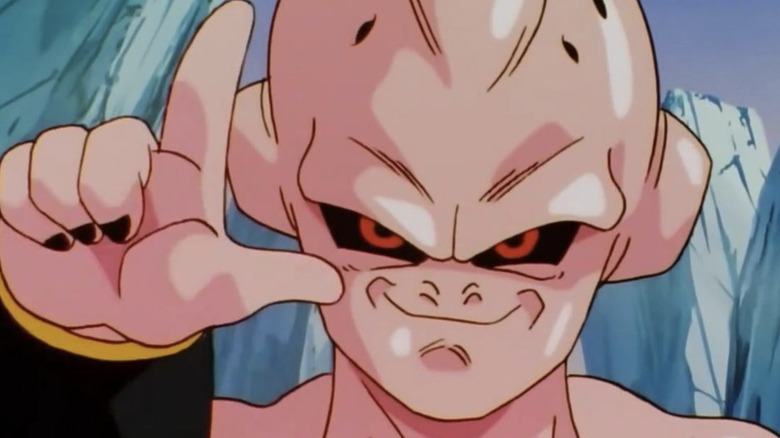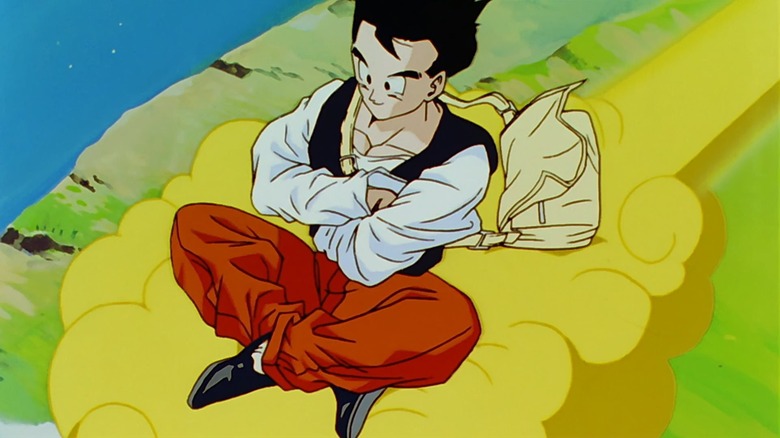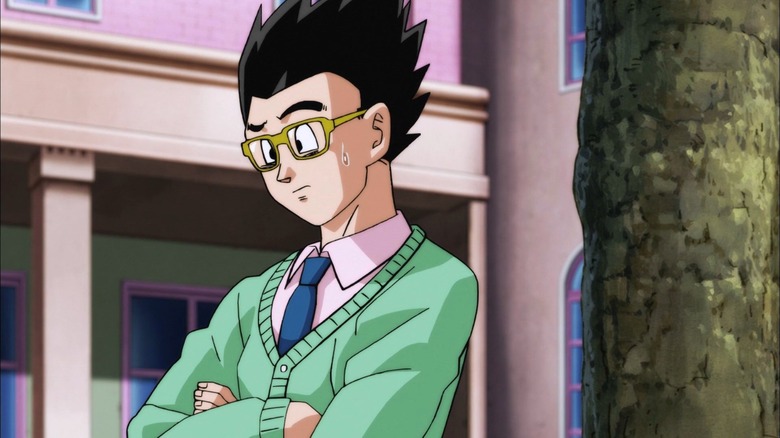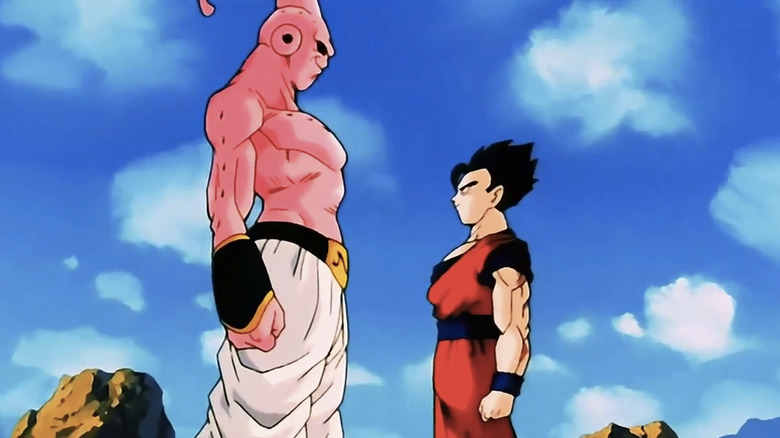Why Akira Toriyama Dragged His Feet On Introducing Buu To Dragon Ball Z
"Dragon Ball Z" has had its fair share of antagonists throughout the manga's run. Goku and company have gone against some fantastical foes, from androids to aliens to evil spirits. "Dragon Ball" creator Akira Toriyama is full of ideas, so it should surprise no one that the creator isn't short on opponents for the "Dragon Ball" crew to fight. However, the fast pace of the manga (and, in turn, the anime) would eventually slow down its pace before introducing its biggest antagonist. Toriyama's inclusion of Majin Buu would be gradual, unintentionally changing the direction of the narrative for one specific character.
Majin Buu wouldn't get introduced until chapter 461 of the manga, 40 chapters after the last significant conflict of the Shonen comic. Chapter 421 of the series had things settling in the "Dragon Ball Z" world, with Goku's son Gohan attending Orange Star High School. This arc of Gohan getting an education while keeping his Saiyan powers in check would last all 40 chapters, with Toriyama having a newfound sense of hesitancy to get into the next big battle.
A change of pace
In a Shonen Jump interview translated by Kanzenshuu, Akira Toriyama explained that he was apprehensive about moving onto next big story arc simply because of how much he enjoyed where the story was at that point:
"I'm pretty sure I just kept on drawing without a clue Majin Buu was going to turn up. I enjoyed working on that part, but eventually, I figured it was time to come up with a new enemy... Even though I would have liked to just go on with the 'slice of life' stuff..."
"Dragon Ball Z" had been one constant battle (and many transformations) after another before Gohan's high school arc in the "Dragon Ball Z" manga. So when this change of pace and story presented itself, Toriyama seemed pleased with the new direction. Manga artist Toyotarō, who would take over illustrative duties on the sequel series "Dragon Ball Super," went on to speak about his admiration of the "slice of life" genre:
"Peace is good, too (laughs). I really liked the laid-back outlook of your [Toriyama's] Savings Warrior Cashman manga that ran in V-Jump, and other things from that period. But while the children back then enjoyed the "slice of life" material, they still wanted battles... (laughs)."
A book smart Gohan
As Toyotarō says, people still want battles in their Shonen manga, which is basically the whole point of "Dragon Ball Z." The anime adaptation would air concurrent with the manga's new chapter releases, so Majin Buu's introduction would have to come eventually. Toriyama would introduce Majin Buu to both the show and manga's final arcs, joining the ranks of Frieza and Cell as one of the best villains of "Dragon Ball Z." However, the time frame before his entrance would also be just as crucial to "Dragon Ball" as Buu ended up being. Toriyama's "slice of life" story of Gohan in school, which slowed the story and halted Buu's introduction, would carry over into the sequel series for the anime and manga "Dragon Ball Super."
Taking place five years after "Dragon Ball Z," the sequel has Gohan on a much different path than he was before. Originally considered Goku's successor in strength and skill, Gohan gave up training to pursue an education and career to support his family. This might seem unexpected at first, but it makes sense when you look at Toryiama's discovery of a new side of Gohan. Toriyama recalled:
"Drawing Gohan's daily life made me gradually realize he likes studying more than fighting (laughs)."
Toriyama's fundamental understanding of his characters lead to unexpected changes in their arcs, with spur of the moment changes becoming long lasting in the sequel "Dragon Ball Super."
Toriyama's evolving story
The creator of "Dragon Ball Z" isn't a writer who sticks to rigid storylines. Nor is he someone who has everything planned out from the beginning. The mangaka's ability to use unexpected changes in his story, to add new layers to his characters, is one of many reasons that the story of Goku and his friends and family has lasted this long. Toriyama's preference for a daily life story instead of an action-filled battle would hold up Buu's first appearance.
This direction would, in turn, end up helping to create a defining characteristic for Gohan, altering his character in the subsequent sequel series. Moreover, this new change in Gohan subverted expectations for what a "Dragon Ball" mainstay can be. Instead of constantly training and wanting to be stronger like his father, Gohan becomes a family man while becoming "weaker" in strength compared to the other characters.
This makes for a fascinating detour for "Dragon Ball Z," and it's one of many praiseworthy aspects of "Dragon Ball" as a whole, with the manga (and the anime) perhaps evolving and transforming even more than its characters do. And when you're talking about "Dragon Ball Z," that's saying something.



